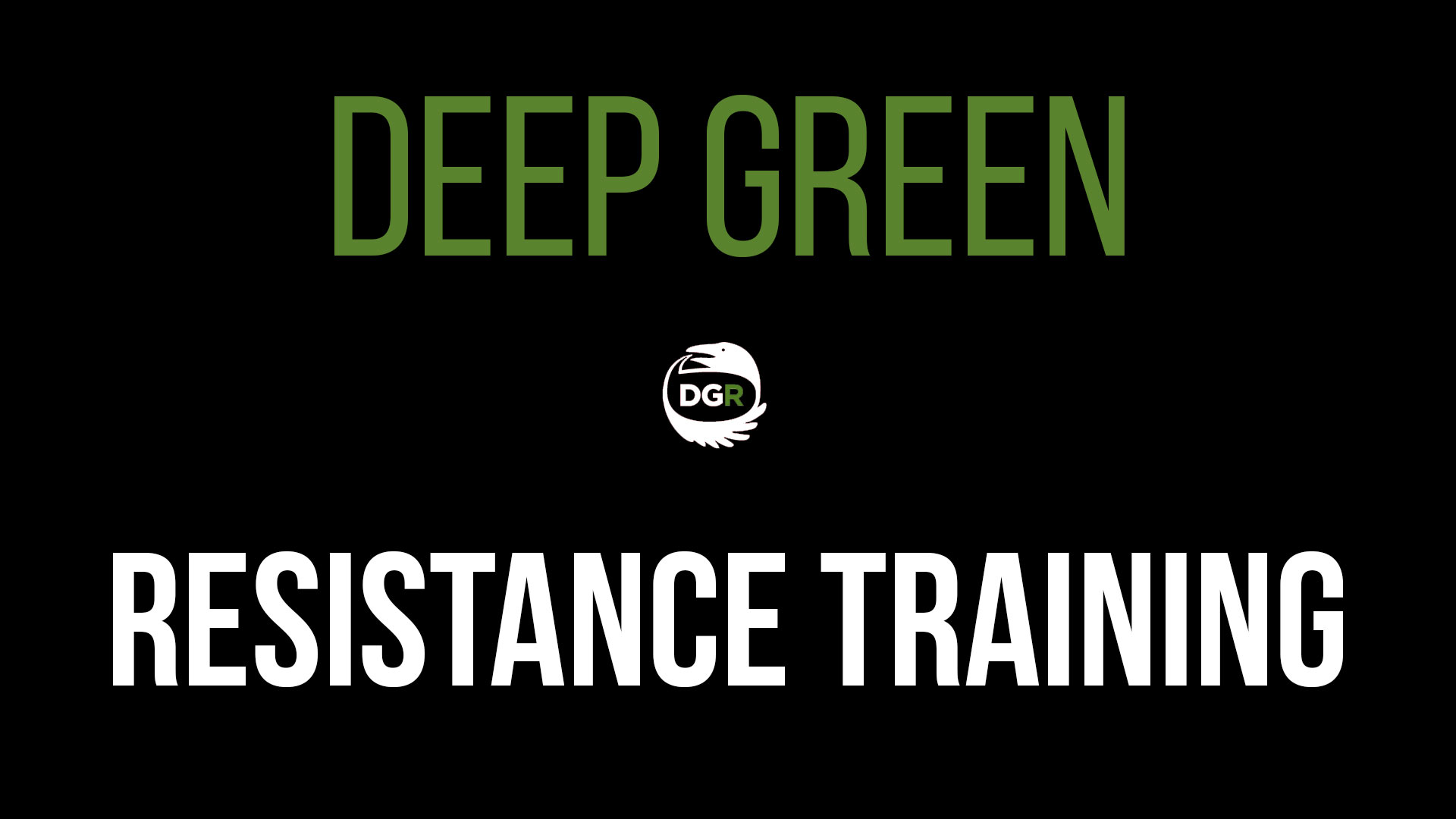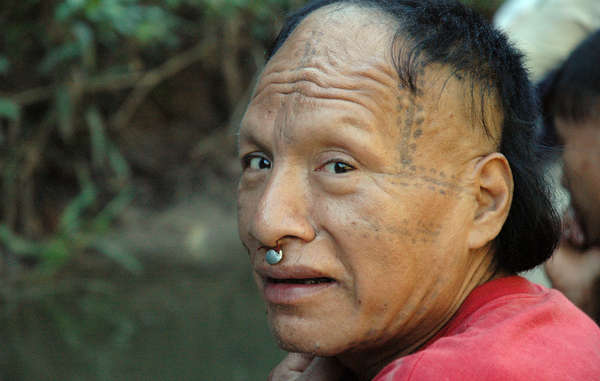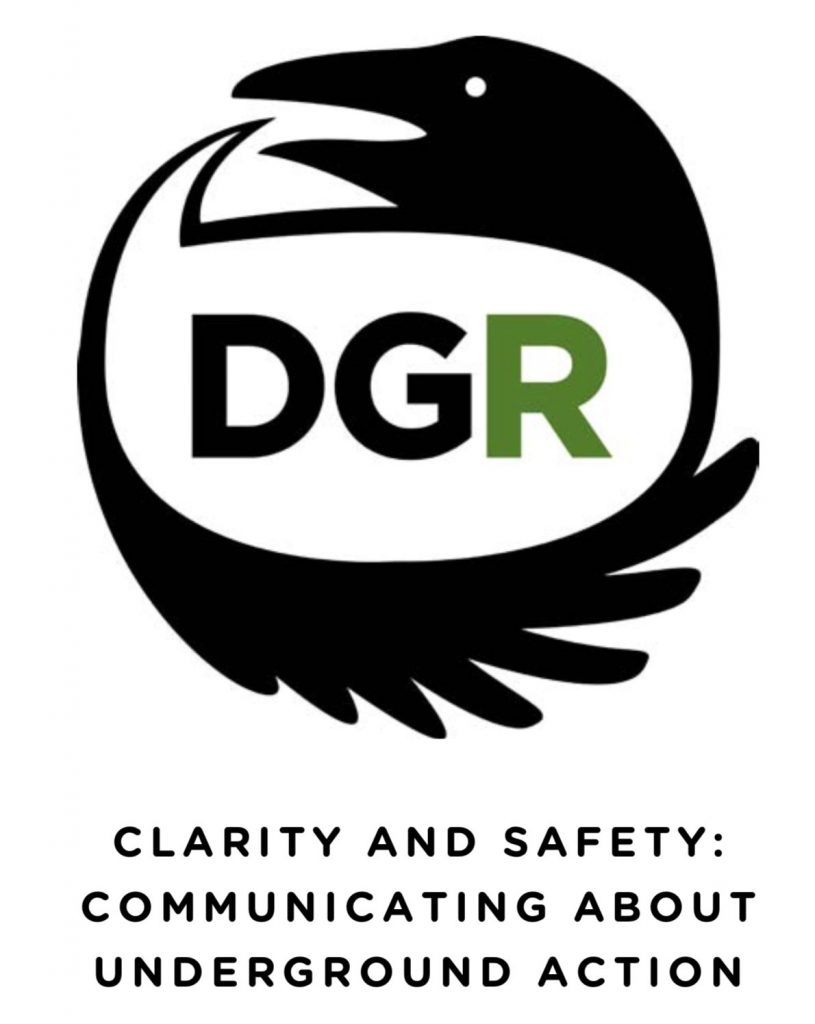
by DGR News Service | Feb 2, 2018 | Culture of Resistance, Direct Action, Movement Building & Support, The Solution: Resistance
Activists, save these dates:
Deep Green Resistance will conduct advanced training in direct action, revolutionary strategy, tactics, and organizing June 22 – 24. This workshop is aimed at providing practical skills and networking to activists, organizers, and revolutionaries interested in saving the planet.
Environmental and social justice activists realize we are losing. Our tactics are failing and things are getting worse. This training will focus on escalation and creative, advanced tactics to increase our effectiveness.
Topics include the use and deployment of soft and hard blockades; hit and run tactics; police interactions; legal repercussions of resistance work; operational security; terrain advantages; strategy; escalation, and more.
The training will be conducted by experienced Deep Green Resistance activists / organizers as well as noted guest speakers (to be announced).
Sessions will be held next to Yellowstone National Park, providing a perfect setting to immerse ourselves in the natural world and activism.
Space is Limited and priority will be given to front-line activists, marginalized communities, and women. And save money with Early Bird Tickets – available for a limited time.
Click this link to apply now: https://deepgreenresistance.org/en/resistance-training-2018
Fitness enthusiasts know that resistance training leads to greater strength. Enhance the effectiveness of your resistance with us this June.

by Deep Green Resistance News Service | Jan 29, 2018 | Colonialism & Conquest
Featured image: Tomas was contacted between 2001 to 2003 and now lives in the Amazon region where one of the deadliest roads has been proposed. © David Hill/Survival International
by Survival International
Peru has approved a law that could devastate several uncontacted Amazon tribes.
The law declares “in the national interest” the construction of roads in the remote Ucayali region that borders Peru and Brazil.
The area lies inside the Uncontacted Frontier, home of the highest concentration of uncontacted tribes on Earth.
Several illegal roads that cut through uncontacted Indians’ lands have already been opened up. Thousands of illegal gold miners operate in the region, and have polluted dozens of rivers with mercury.
Uncontacted tribes face catastrophe unless their land is protected. They have the right to their land under Peruvian and international law.
Road building in the Amazon almost always leads to a devastating influx of settlers, loggers and ranchers.
Pope Francis, speaking from the region just days before the road law was passed, said: “Never before has there been a greater threat to indigenous peoples’ lands.
“We must break with the historical paradigm that sees the Amazon as an inexhaustible resource for other countries, without taking into account its inhabitants.”
Survival is calling on the Peruvian government to scrap road building plans inside the Uncontacted Frontier.
by Deep Green Resistance News Service | Jan 13, 2018 | Biodiversity & Habitat Destruction
Editor’s note: On January 8, 2018, a federal judge dismissed US government’s criminal charges against Nevada rancher Cliven Bundy, two of his sons and another man linked to militia groups, over procedural errors made by the prosecution. This is a history of the Bundy grazing allotment.
by Center for Biological Diversity
• The Bundy family began grazing on federal public lands near Gold Butte, Nevada, in 1954 – lands located in the recently designated Gold Butte National Monument – some of the driest and most fragile desert in North America.
• In 1973 the Bundys were granted their first federal grazing permit. Given the aridity and fragility of the desert, the Bureau of Land Management (BLM) issued a permit for grazing in this ephemeral range, which is subject to environmental and other conditions. Ephemeral range in the southwest desert region does not consistently produce forage for grazing.
• In 1989 the desert tortoise was granted protection under the federal Endangered Species Act because of widespread destruction of its fragile desert habitat by livestock grazing, urbanization and other factors.
• In 1991, the U.S. and Fish and Wildlife Service (FWS) issued a draft Biological Opinion (BO) governing the management of desert tortoise habitat. The BLM developed a timetable to meet its requirements and shared the requirements and timetable with permittees, including Cliven Bundy, whose cattle grazed in tortoise habitat. The BLM requested and FWS then agreed to delay implementation of the BO until 1993.
• On February 26th, 1993, Cliven Bundy sent two “Administrative Notices of Intent” to the BLM asserting that the BLM has no legal jurisdiction over federal public lands, and stating his intent to graze cattle, “pursuant to my vested grazing rights.” Bundy stopped paying his grazing fees after February 28th of 1993.
• The BLM sent Bundy a notice that his request for a grazing application had not been received and requested that he re-submit within one week or BLM action would be taken.
• On July 13, 1993, BLM sent Bundy a Trespass Notice and Order to Remove which set a timeline for cattle removal given his non-payment of fees. Later BLM extended the timetable at Bundy’s request.
• On September 30, 1993, the Nevada State BLM Director requested injunctive relief—action from the court—to address Bundy’s unlawful cattle grazing.
• On January 24, 1994 BLM tried to deliver to Bundy a proposed decision to cancel his permit, request payment of trespass damages, and order the removal of trespass livestock. When BLM delivered the notice, Bundy’s son tore up the document. The torn document was recovered and used as evidence of illegal grazing by the BLM in court.
• On March 3, 1994, Cliven Bundy, given his refusal to recognize federal authority to own and administer federal lands, sent payment for his grazing permit to Clark County instead of the BLM. The county refused Bundy’s payment for lack of jurisdiction.
• In 1998, the U.S. Attorney filed suit requesting that the federal district court order Bundy to remove his cattle and pay outstanding grazing fees and fines totaling now more than $150,000.
• In October 1998, the BLM approved a new Resource Management Plan for the Las Vegas Field Office. The plan allowed for the closure of grazing allotments in critical tortoise habitats, including the Bunkerville allotment.
• On November 3, 1998, United States District Judge Johnnie Rawlinson permanently enjoined Bundy from grazing his livestock within the Bunkerville allotment. Rawlinson assessed fines against Bundy, affirmed federal authority over federal land, and wrote that “[t]he government has shown commendable restraint in allowing this trespass to continue for so long without impounding Bundy’s livestock.” Cite.
• Bundy refused to comply with the order. He filed an emergency motion for stay to try and halt the court ruling while he appealed the case to the Ninth Circuit Court.
• On May 14th, 1999, the Ninth Circuit Court denied Bundy’s appeal and upheld the district court decision ordering the removal of Bundy’s cattle from the Bunkerville allotment. Cite.
• On September 17th, 1999, after Bundy refused to comply with the court’s earlier orders, the Federal District Court again ordered Bundy to comply with the earlier permanent injunction and assessed additional fines.
• In December 1998, in order to mitigate harm to desert tortoise from urban sprawl, Clark County purchased the federal grazing permit to the Bunkerville Allotment for $375,000. The county retired the allotment to protect the desert tortoise. With the ongoing trespass cattle, Clark County inquired as to the rights of Cliven Bundy to be on the allotment. In a July, 2002 memo the BLM stated that the “Mr. Bundy has no right to occupy or graze livestock in the Bunkerville grazing allotment. Two court decisions, one in Federal District Court and another in the Circuit Court of Appeals,
fully supports our positions.”
• On April 2, 2008 the BLM sent Bundy a notice of cancellation, cancelling Bundy’s range improvement permit and a cooperative agreement. The notice called for the removal of his range improvements, such as gates and water infrastructure.

Cattle have been grazing in the vast Gold Butte area since an armed standoff between the government and self-styled militia in 2014.
Kirk Siegler/NPR
• On May 9, 2008 Cliven Bundy sent a document entitled “Constructive Notice” to local, county, state, and federal officials, including the BLM. It claimed that Bundy had rights to graze on the Bunkerville Allotment; it called on state and county officials to protect those rights from the federal government; and it responded to the BLM’s April 2 Notice of Cancellation by saying he has not ignored it, and that he will do whatever it takes to protect grazing rights.
• In 2011, BLM sent Bundy a cease-and-desist order and notice of intent to roundup his trespass cattle.
• In 2012, BLM aerial surveys estimated about 1000 trespass cattle remained.
• In April 2012, the BLM at the last moment canceled plans to roundup trespass cattle to ensure the safety of people involved in the roundup after Cliven Bundy made violent threats against BLM.
• On July 2013, U.S. District Court of Nevada again affirmed that Bundy has no legal rights to graze cattle. It ordered Bundy to remove his cattle from public lands within 45 days and authorized the U.S. government to seize and impound any remaining cattle thereafter. Cite.
• In October 2013, after an appeal by Bundy, the federal court again affirmed that Bundy had no legal right to graze cattle on federal public lands. The court ordered the removal of cattle within 45 days and ordered Bundy not to interfere with the round-up. Cite.
• In March 2014, the BLM issued a notice of intent to impound Bundy’s trespass cattle and closed the area to the public for the duration of the action.
• On April 5, 2014 the roundup began.
• On April 9, 2014 heavily armed militia from across the U.S. converged on the Bundy ranch to confront federal officials conducting the roundup.
• On April 12, about 300 cattle that had been rounded up and held in a corral were released by the BLM after the heavily armed militia confronted and aimed rifles at federal agents. The BLM canceled the roundup out of safety concerns for employees and the public.
• In April 2015, Bundy held a weekend barbecue and “Liberty Celebration” to mark the one-year anniversary of the standoff.
• In June, 2015, shots were fired near public land surveyors working in the Gold Butte area. BLM orders all employees to stay away from Gold Butte.
• On Feb 11, 2016, Cliven Bundy was arrested at the Portland, Oregon airport on his way to support his son’s paramilitary occupation of the Malheur National Wildlife Refuge in Oregon.
• As of February, 2017, Bundy’s trespass cattle continue to graze illegally on federal public lands near Gold Butte.

by Deep Green Resistance News Service | Jan 10, 2018 | Human Supremacy
Featured image: Real freedom is not found in the quest to escape limits but in deepening our understanding of our place in a world with limits. EATCUTE / GETTY IMAGES
by Robert Jensen
In a routinely delusional world, what is the most dangerous delusion?
Living in the United States, I’m tempted to focus on the delusion that the United States is the greatest nation in the history of the world – a claim repeated robotically by politicians of both parties.
In a mass-consumption capitalist society, there’s the delusion that if we only buy more, newer, better products we all will be happier – a claim repeated endlessly in commercial propaganda (commonly known as advertising and marketing).
I’m also white, and so it’s understandable to worry about the delusion that white people are superior to non-white people. And as a man, I reflect on the delusion that institutionalized male dominance is our fate, whether asserted to be divinely commanded or evolutionarily inevitable.
But all these delusions that rationalize hierarchies within the human family, and the resulting injustices that flow from those hierarchies, are less frightening to me than modern humans’ delusion that we are not bound by the laws of physics and chemistry, that humans can live beyond the biophysical limits of the ecosphere.
This delusion is not limited to one country, one group, or one political party, but rather is the unstated assumption of everyday life in the high-energy/high-technology industrial world. This is the delusion that we are – to borrow from the title of a particularly delusional recent book – the god species.
This ideology of human supremacy leads us to believe that our species’ cleverness allows us to ignore the limits placed on all life forms by the larger living world, of which we are but one component. What we once quaintly called “environmentalism” – which too often focused on technical solutions to discrete problems rather than challenging human arrogance and the quest for endless affluence – is no longer adequate to deal with the multiple, cascading ecological crises that define our era: climate destabilization, species extinction, soil erosion, groundwater depletion, toxic waste accumulation, and on and on.
Playing god got us into this trouble, and more of the same won’t get us out.
This inability to accept the limits that come with being part of “nature” – a strange term when used to contrast with “human,” as if humans were somehow not part of the natural world – was on my mind as I read two new books about controversial topics that typically are thought of as social, not ecological, issues: Transgender Children and Young People: Born in Your Own Body, edited by Heather Brunskell-Evans and Michele Moore, and Surrogacy: A Human Rights Violation, by Renate Klein.
Both books offer a feminist critique of the ideology and practices of these movements that herald medical/technological “solutions” to struggles with gender norms and infertility.
Brunskell-Evans’ and Moore’s book brings together researchers, activists, mental health practitioners and parents who question such practices as puberty suppression to block the development of secondary sex characteristics as treatment for gender dysphoria. Are such disruptions of a child’s development with powerful drugs warranted, given the lack of testing and absence of a clear understanding of the etiology of transgenderism? The authors challenge what has rapidly become the liberal dogma of embracing medicalized approaches to the very real problem of patriarchal gender norms (the demand that boys must act one way and girls another) that constrain our lives.
Klein marshals research and the testimony of surrogates to point out that another liberal dogma – affluent individuals have a right to “rent a womb” so they may have a child genetically related to them – involves considerable risks for the surrogate mother (sometimes referred to as the “gestational carrier”). The author’s assessment is blunt, but well supported: modern surrogacy is a form of exploitation of women and trafficking in babies.
Both books demonstrate the enduring relevance of the radical branch of feminism that highlights men’s attempts to control and exploit women’s reproductive power and sexuality as a key feature of men’s dominance in patriarchal societies. And both are critical of the naive celebration of high-tech medicine to deal with issues that stem from patriarchy’s rigid, repressive and reactionary gender norms.
Those radical feminist challenges dovetail with a radical ecological critique that reminds us that being alive – being a carbon-based creature that exists within the limits of the ecosphere – means that we should be sceptical of claims that we can magically transcend those limits. The high-energy, high-tech, human-defined world in which we live can lull us into believing that we are like gods in our ability to shape the world, and to shape our own bodies.
Of course, drugs, surgery and medical techniques routinely save lives and improve our lives, in ways that are “unnatural” in some sense. To highlight these questions does not mean that lines are easy to draw between what is appropriate and what is ill-advised. But we invite serious miscalculations when we embrace without critical self-reflection the assumption that we can manipulate our human-centred worlds without concern for the limits of the larger living world.
Many of us have experienced this in end-of-life care decisions for ourselves or loved ones. When are high-tech medical interventions that prolong life without concern for quality of life a mistake? I have had long conversations with friends and family about where the line should be drawn, not only to make my own views clear but to search for collective understanding. The fact that the line is hard to draw, and even harder to face when arriving at it, doesn’t make the question any less relevant. The fact that there is no obvious and easy answer doesn’t mean we can avoid the question.
Elective cosmetic surgery is perhaps the best example of the culture’s rejection of limits. All living things eventually die, and human appearance changes as we age, yet many people search for ways to stave off that aging or to change their appearance for other non-medical reasons. In 2017, Americans spent more than $15 billion on cosmetic procedures (surgical and nonsurgical), 91% of which were performed on women. The two most common surgical procedures are liposuction and breast augmentation. Although some people who get liposuction are overweight, it is not a treatment for obesity, and breast augmentation is rarely related to physical health. These procedures typically are chosen by people seeking to conform to social norms about appearance.
With this humility about high-tech human intervention in mind, how should we understand the experience of feeling at odds with gender norms? How should we reconcile the physical inability to bear children with the desire to have children? There are no obvious or easy answers, but I believe that as a culture we are better served by starting with the recognition that we are not gods, that we cannot endlessly manipulate the world without risking unintended consequences for self and others. How does the rejection of limits impede our ability to first examine and then resist the impositions of patriarchy, to find new understandings of sex/gender and new social relationships for caring for children?
At the planetary level, we have considerable evidence that our faux-god attempts to dominate the ecosphere – which started most dramatically with the invention of agriculture 10,000 years ago and intensified with the exploitation of fossil fuels – now make the future of a large-scale human population uncertain. The lesson some of us take from that is to turn away from the “technological fundamentalism” that leads us to see all problems as having high-energy/high-tech solutions and consider different ways of living within the biophysical limits of the planet.
That same perspective is compelling on the level of these questions around gender and fertility. Here’s a sensible place to start: We should step back from the hyper-individualism of neoliberal ideology and examine more deeply how the institutionalized male dominance of patriarchy has shaped our collective thinking about gender and identity, and about women’s status and parenting. Such reflection reveals that the liberal ideology on transgenderism and surrogacy embraces the technological fundamentalism that embraces medical and market “solutions” rather than enhancing the sense of integrity that we seek.
Integrity is a key concept here because of its two meanings – adherence to moral principles and the state of being whole. We strive to act with integrity, and to maintain the integrity of both the living body and the larger living world. In hierarchical systems that reward domination, such as patriarchy, freedom comes to be understood only at the ability to control, others and the world around us. Andrea Dworkin captures this struggle when she writes:
“Being an object – living in the realm of male objectification – is abject submission, an abdication of the freedom and integrity of the body, its privacy, its uniqueness, its worth in and of itself because it is the human body of a human being.”
Freedom in patriarchy is granted only to those in control, and that control turns other living things into objects, destroying the possibility of integrity-as-moral-principles and integrity-as-wholeness. Real freedom is not found in the quest to escape limits but in deepening our understanding of our place in a world with limits.
Robert Jensen is a professor in the School of Journalism at the University of Texas at Austin and the author of The End of Patriarchy: Radical Feminism for Men.






